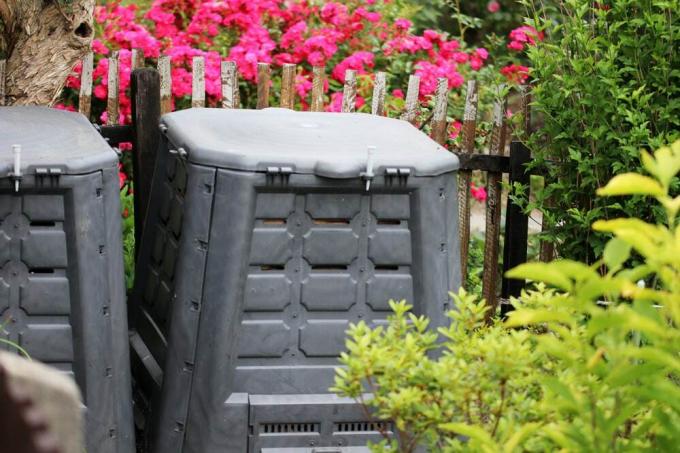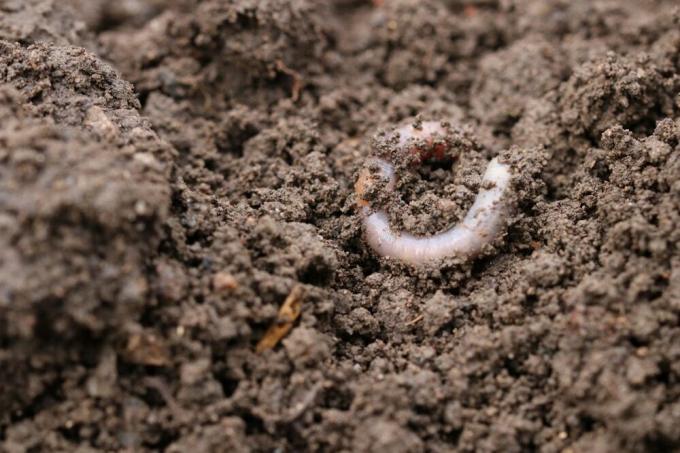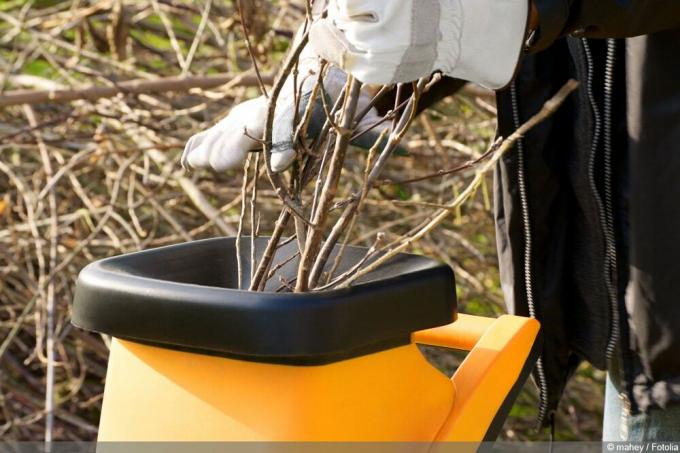

Table of contents
- Advantages
- The principle
- Set up compost
- Location
- heap or container?
- composting
It couldn't be more natural and sustainable: If you use compost as a fertilizer, you not only provide the plants in your garden with optimal nutrients, but also protect the environment. The effect does not just last for a short time, but improves the properties of the floor over many years. Again, there are no side effects. So it's high time to finally start composting.
Advantages
Composting was out for a long time. Ready-mixed fertilizer from specialist shops seemed to promise better and, above all, faster results. A compost heap or a compost bin in the garden also looked unappealing to many gardeners. In addition, composting had a reputation for being not only quite complicated, but also old-fashioned. Thankfully, that has largely changed today. The advantages of compost are being rediscovered more and more - especially in times when awareness of environmentally friendly, sustainable action is increasing. There is no denying the tangible benefits of compost. Here are the main ones:
- sustainable improvement of the garden soil
- increase in fertility
- more resilient plants
- optimal supply of vital soil organisms
- Cost savings as less fertilizer is required
Before you can take advantage of these benefits, however, it must first be composted. This is basically a very complex biological process in which chemistry and physics also play a role that should not be underestimated. Luckily, you don't need to know all the details of this process. And as a gardener, you don't have to do a lot for it either.
The principle

Composting is part of the world's natural nutrient cycle. The principle is very simple: Organic substances are broken down under the influence of oxygen and microorganisms. On the one hand, carbon dioxide is released during this degradation. On the other hand, however, a lot of water-soluble minerals are also produced, most of which can be used as fertilizer for plants. These fabrics are:
- nitrates
- phosphates
- ammonium salts
- potassium compounds
- magnesium compounds
As already mentioned, composting is a completely natural process that takes place automatically in nature. However, you can also use it in the garden in a very targeted manner and in this way produce a completely natural plant fertilizer yourself. The effort for this is kept within very narrow limits.
A notice:
Composting is the perfect way to recycle organic waste that accumulates in the garden. Household waste such as leftovers can also be recycled in this way.
Set up compost
Composting is a constant occurrence in every garden, whether you have a compost heap or not. Every single blade of grass that remains after mowing is inevitably and mostly invisibly composted. However, if you want to use compost as fertilizer, you have to be more specific, as you need a larger amount that is available at a certain location. As a result, one gets around the facility or Don't erect a compost heap around. It can either grow freely at a certain point in the garden or be in a container. When setting up, two factors are of crucial importance: the location and the size. The latter depends primarily on the expected amount of compost per year. And this in turn depends on the size of the garden and the number of people living in a household. The following rules of thumb apply:
- For every square meter of garden area, around five liters of shredded garden waste are produced every year
- around 150 liters of organic household waste are generated per person and year
Using these two simple rules, it is relatively easy to calculate the expected amount of compost per year. It must be taken into account that about half of the mass rots within this year and not all of it accumulates at once. In principle, it can therefore be said that about half of the calculated volumetric mass is required for a compost heap.
Tip:
If you buy a container for composting, the size should be based on this value. With a free compost heap, on the other hand, the value plays a subordinate role, but only roughly indicates the space requirement.
Location
For a long time it was thought that a location that was as sunny as possible would be ideal for a compost heap. In the meantime, however, scientific studies have shown that it doesn't really matter whether the location is in the sun or in the shade - rotting takes place everywhere at the same rate instead of. When choosing a location, other points are therefore important. Firstly, it should be as close as possible to those plants that are likely to produce the largest amount of garden waste. That saves time and effort. On the other hand, it should be placed relatively far away from the residential building and under no circumstances in the corresponding wind direction to the house. Composting creates a sometimes bad stench that you don't necessarily want to have in your home.
heap or container?

Opinions differ on this question. However, it is mainly about aesthetic aspects. In any case, differences in the quality of the compost cannot be determined. In addition, rotting does not take place faster in a closed container. Basically, it doesn't matter which variant you choose. So-called slat composters have proven to be the ideal compromise solution. They are something of a cross between a free heap and a container. Slat composters are available in specialist shops as complete kits. The construction is downright easy. In principle, only wooden slats are placed on top of each other and fastened. There is some free space between the individual slats. This maintains the appearance of a compost heap while maintaining order.
Tip:
Only compost bins that are open at the top and bottom can be used. Composting requires direct contact with the ground.
composting
To say it again: composting itself is a highly complex process in which microorganisms, water and air interact. But composting is also very easy for every garden owner. In principle, organic waste must be thrown in a heap. The rest will then take care of itself, so to speak. For this it is necessary that there is direct contact with the ground. The microorganisms work from here. Consequently, composting always takes place from the bottom up. It also occurs in different stages, since new waste will always be added to the existing heaps. It is therefore recommended that the compost is first used or cleared when the entire heap of a garden year has been transformed. Normally, the material then forms the basis for the new gardening year.
 garden editorial
garden editorial I write about everything that interests me in my garden.
Learn more about making compost

Dampen the earth properly: build your own earth damper | sterilize compost
Sterilizing soil is a common practice that more and more home gardeners are embracing. This allows soil and especially compost to gain optimal quality. The gardening expert explains how to do it correctly and how easy it is to build an earth damper yourself.

Build your own worm box: Instructions | DIY worm composter
Building a worm box yourself is quite easy, but has numerous advantages. In our instructions we show how the DIY worm composter can be made with simple means and in just a few steps.

Build your own composter 12 tips for rain barrels, pallets & garbage cans
A composter is ideal for the garden and balcony. But the numerous options represent a hurdle. Each variant has its advantages. But no matter whether you build your own composter or buy it: there are some aspects that you should consider.

Balcony worm composter: Create compost on the balcony
Gardening is now done in the smallest of spaces, so growing vegetables on the balcony is no longer out of the question. However, a prerequisite for a good harvest is high-quality soil, which can be produced even in a limited space using vermicompost.

Shredding garden waste and hedge trimmings: which shredder is suitable?
Gardening results in branch cuttings and green waste that can either be disposed of or reused. With a garden shredder, the greens can be processed into compost or mulch and made available for garden use. There are various variants to choose from, which can be adapted to the intended use.

Build a pass-through sieve yourself | Mesh size for compost, soil and sand
In a well-equipped home garden, a pass-through sieve removes unwanted components from compost, soil and sand. With a little manual skill and these instructions, you can easily build a stable garden sieve yourself. You can find out here which mesh size guarantees perfect results.

